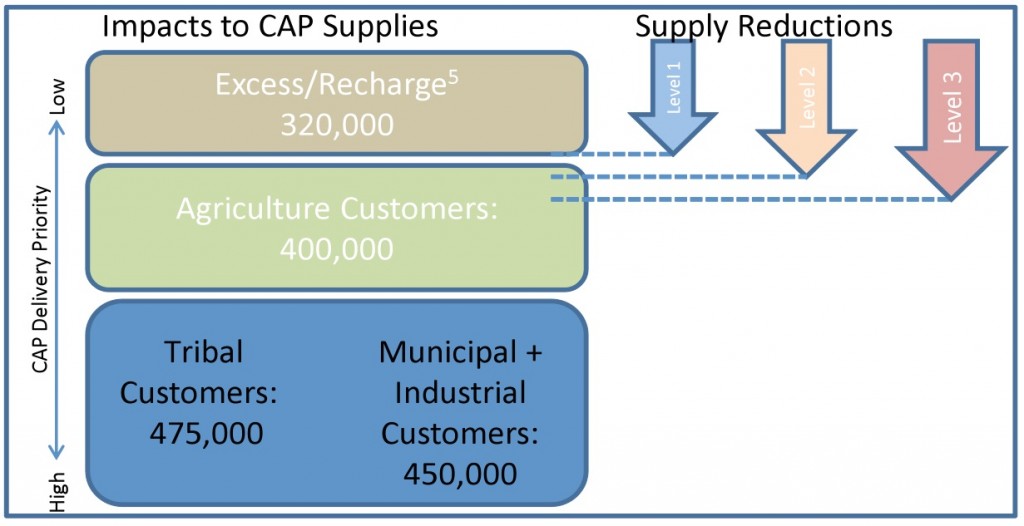It’s generally more complicated than I think:
A member of the Inkstain brain trust points out two catches in my “why can’t Phoenix just leave its unused apportionment in Lake Mead” post last week.
The first has to do with Arizona’s application of the doctrine of prior appropriation with respect to its allocation of Colorado River water delivered through the Central Arizona Project.
As shown in the diagram above, CAP water is stacked in priority first to meet Native American water rights, then cities, then ag users, and then “excess” and groundwater recharge. Under the doctrine of prior appropriation, if a “senior” user doesn’t use water, it’s then available to “juniors” like Central Arizona Irrigation and Drainage District in Pinal County, which last year got 124,369 acre feet of CAP water. And storing water in Lake Mead, my brain truster argues, doesn’t count as a “use”, so I guess it’s not the simple accounting exercise I thought.
Second, what Phoenix wants to do not would not qualify as “Intentionally Created Surplus” water even if Phoenix was a direct Colorado River federal water contractor and therefore eligible for the ICS program. ICS is a legal widget in which basin water users conserve water by, for example, fallowing land or lining canals and then bank the water in Lake Mead. I had suggested in my earlier post that what Phoenix wants to do in leaving its unused apportionment in Mead is kinda like ICS, but clearly it’s not. Even if Phoenix was a contractor, what it wants to do wouldn’t qualify as ICS because it’s not water once used and then conserved (a la fallowing).
The notion of Phoenix storing unused apportionment in Mead still could be a good thing, but the details are more complicated than I thought.


I don’t think this is a prior appropriation situation, but rather is one of contract. And if I am not mistaken, about ten years ago the CAIDD and others in Pinal County “traded” their long-term contracts for cheaper water on a year by year basis.
Pingback: Bloggers discuss dams, supply, drought causes and mitigation, and more